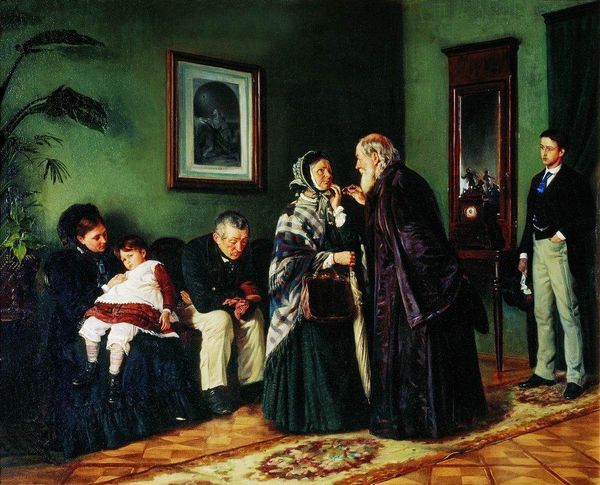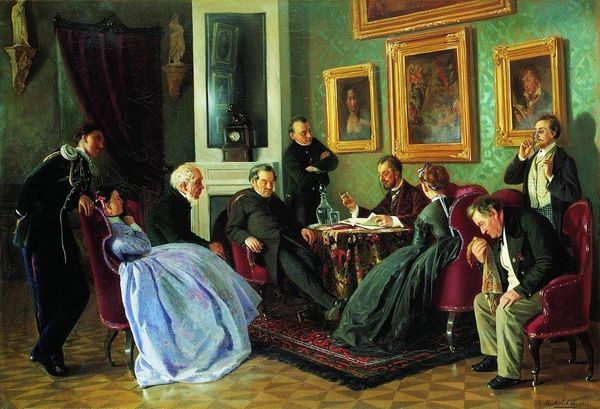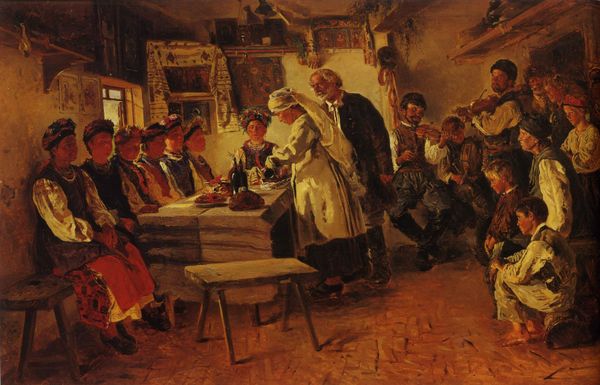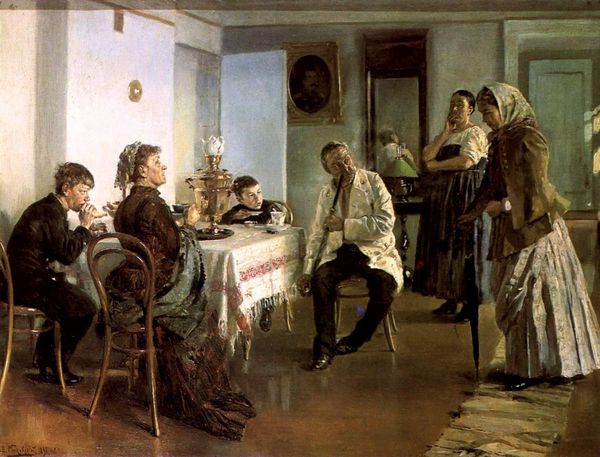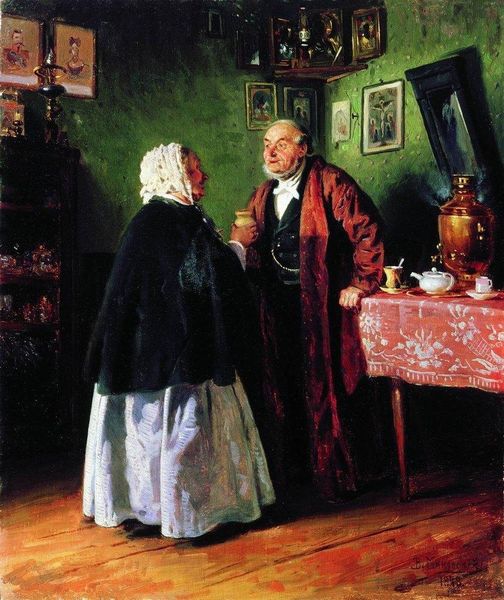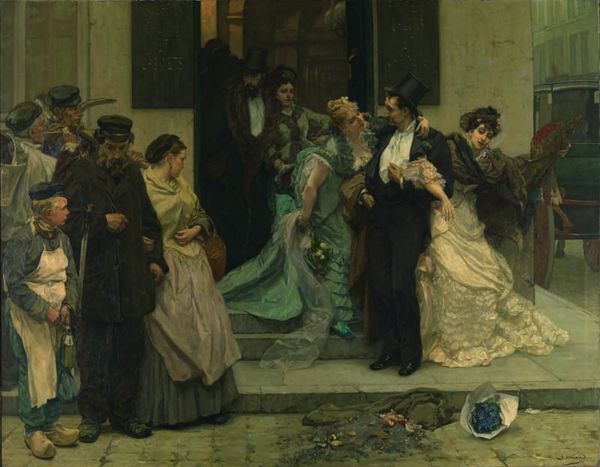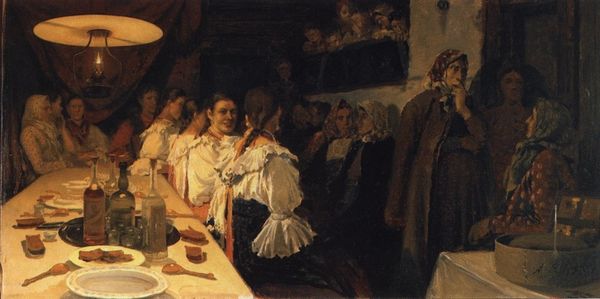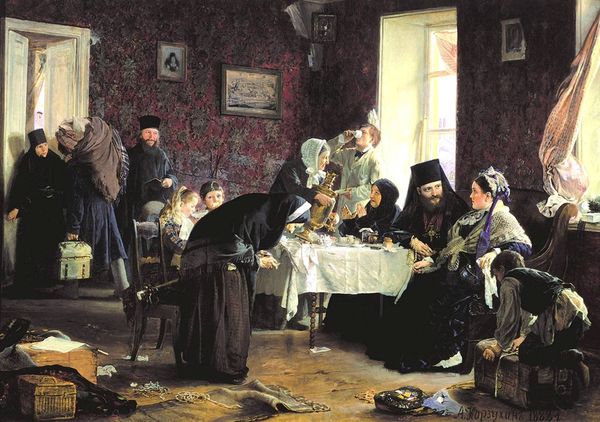
Dimensions: 79 x 105 cm
Copyright: Public domain
Curator: Looking at Vladimir Makovsky's 1882 painting, "Verdict", one immediately feels the weight of an unseen judgment. The sorrow is almost palpable. Editor: Absolutely. And what stands out is the masterful use of oil paints, creating incredibly textured fabrics, particularly in the flowing garments of the adults. Were there any distinct aesthetic influences on Makovsky at this time? Curator: Makovsky painted within the Realist tradition, which deeply influenced the social critique apparent in his work. He depicted contemporary social problems and highlighted class inequalities, similar to the Peredvizhniki movement. Think about the means of production. How would accessibility to particular painting materials in that period affect what and who the artist could portray? Editor: Fascinating. It's worth considering that, during this period in Russia, artistic patronage shifted from the aristocracy to a rising merchant class with reformist views, fostering demand for realistic and empathetic depictions of ordinary people's struggles. How did this shift play into Makovsky's artistic direction? Curator: That is an astute point. The rise of merchant patronage would have supported the popularity and spread of such genre paintings. Let's not overlook, however, the artistic skills that make the picture successful. It's about labor and materiality. Consider what decisions have gone into this seemingly straightforward scene, and the work the audience brings to bear in constructing it. Editor: I'm thinking now of how museums shaped his trajectory. I'd argue that public exhibition culture propelled these politically conscious artworks. These were not images simply consumed in private residences. Rather, they spurred a political dialogue. I also think the role of institutions like the Tretyakov Gallery in Moscow, where this artwork is currently housed, have ensured its continued significance. What else might viewers miss? Curator: I think viewers should examine the painting’s composition. The stark contrast between the guard framed in the doorway on the left and the central family grouping. It creates an immediate visual division representing power and vulnerability. Editor: It speaks to how even the artist’s placement of individuals and figures communicates volumes. I feel like I better grasp the broader socio-political circumstances surrounding "Verdict". Thanks. Curator: Agreed. Paying closer attention to the painting and its place in the historical context offers powerful new insights.
Comments
No comments
Be the first to comment and join the conversation on the ultimate creative platform.
